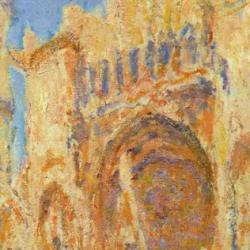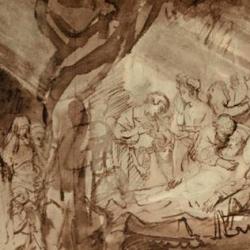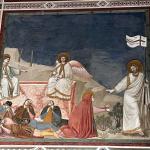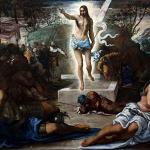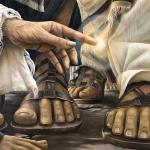The test: Who wrote the following comments on the birth of Jesus?
“He lies in the manger. Notice here that nothing but Christ is to be preached throughout the whole world. What is the manger but the congregations of Christians in the churches to hear the preaching? We are the beasts before this manger; and Christ is laid before us upon whom we are to feed our souls. Whosoever goes to hear the preaching, goes to this manger; but it must be the preaching of Christ. Not all mangers have Christ neither do all sermons teach the true faith. There was but one manger in Bethlehem in which this treasure lay, and besides it was an empty and despised manger in which there was no fodder.
“Therefore the preaching of the Gospel is divorced from all other things, it has and teaches nothing besides Christ; should any thing else be taught, then it is no more the manger of Christ, but the manger of war horses full of temporal things and of fodder for the body . . . .
“But in order to show that Christ in swaddling clothes represents the faith in the Old Testaments, we will here give several examples. We read in Math. 8, 4, when Christ cleansed the leper, that he said to him: ‘Go, show thyself to the priest, and offer the gift that Moses commanded, for a testimony unto them.’ Here you perceive that the law of Moses was given to the Jews for a testimony, or sign, as the angel also here says, namely, that such law represents something different from itself. What? Christ is the priest, all men are spiritual lepers because of unbelief; but when we come to faith in him he touches us With his hand, gives and lays upon us his merit and we become clean and whole without any merit on our part whatever. We are therefore to show our gratitude to him and acknowledge that we have not become pious by our own works, but through his grace, then our course will be right before God. In addition we are to offer our gifts, that is, give of our own to help our fellow man, to do good to him as Christ has done to us. Thus Christ is served and an offering is brought to the rightful priest, for it is done for his sake, in order to love and praise him.
“Do you here see how, figuratively speaking, Christ and the faith are wrapped up in the plain Scriptures? It is here made evident how Moses in the law gave only testimony and an interpretation of Christ. The whole Old Testament should be understood in this manner, and should be taken to be the swaddling clothes as a sign pointing out and making Christ known.
“Again, it was commanded that the Sabbath should be strictly observed and no work should be done, which shows that not our works but Christ’s works should dwell in us; for it is written that we are not saved by our works but by the works of Christ. Now these works of Christ are twofold, as shown before. On the one hand, those that Christ has done personally without us, which are the most important and in which we believe. The others, those he performs in us, in our love to our neighbor. The first may be called the evening works and the second the morning works, so that evening and morning make one day, as it is written in Gen. 1, 5, for the Scriptures begin the day in the evening and end in the morning, that is, the evening with the night is the first half, the morning with the day is the second half of the whole natural day. Now as the first half is dark and the second half is light, so the first works of Christ are concealed in our faith, but the others, the works of love, are to appear, to be openly shown toward our fellow man. Here then you see how the whole Sabbath is observed and hallowed.
“Do you see how beautifully Christ lies in these swaddling clothes? How beautifully the Old Testament reveals the faith and love of Christ and of his Christians? Now, swaddling clothes are as a rule of two kinds, the outside of coarse woolen cloth, the inner of linen. The outer or coarse woolen cloth represents the testimony of the law, but the linnen are the words of the prophets. As Isaiah says in 7, 14, ‘Behold, a virgin shall conceive, and bear a son, and shall call his name Immanuel,’ and similar passages which would not be understood of Christ, had the Gospel not revealed it and shown that Christ is in them.”
Origen? Augustine? Bernard? These are selections from Martin Luther’s Christmas Sermon, 1521.







